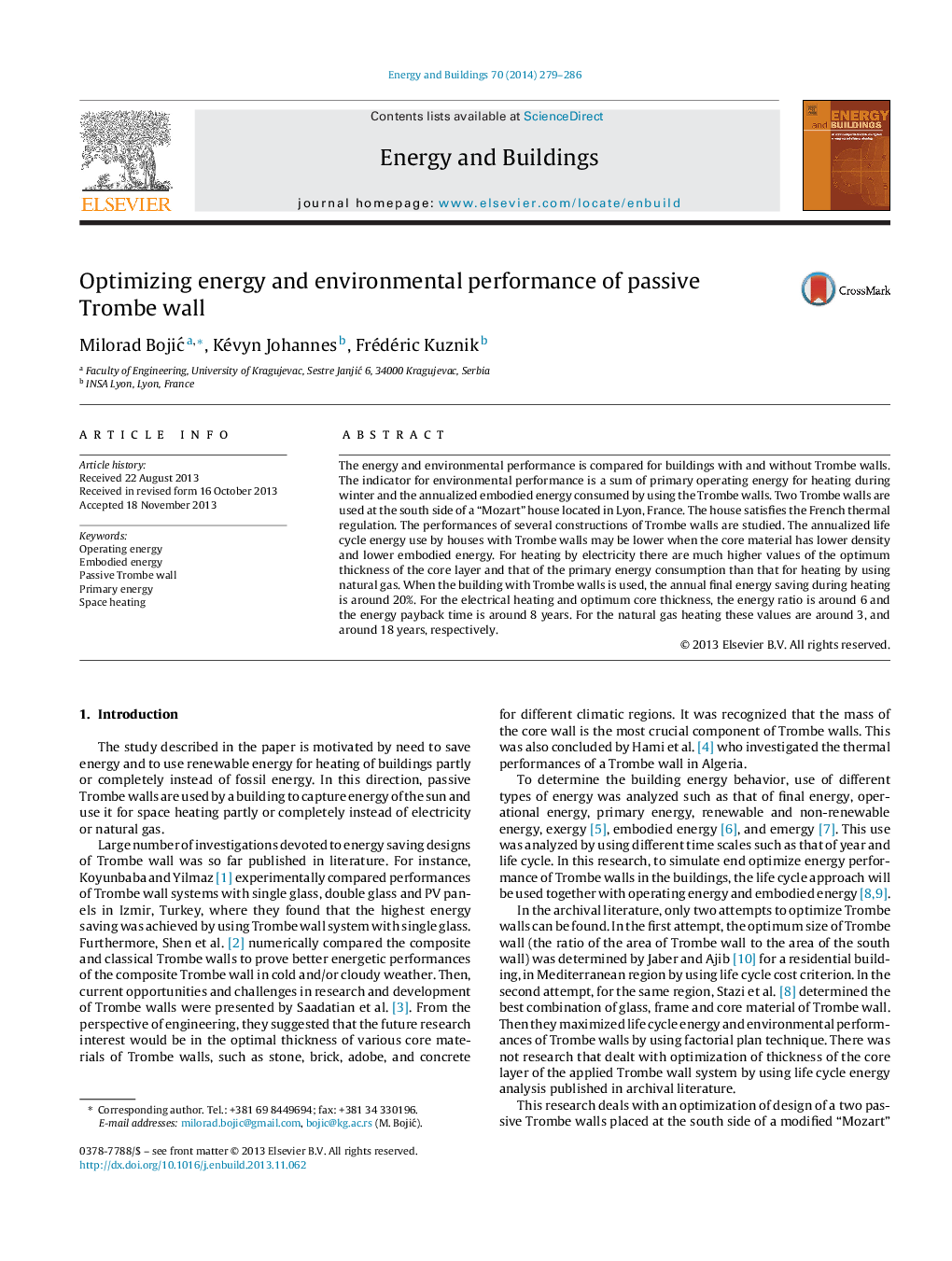| Article ID | Journal | Published Year | Pages | File Type |
|---|---|---|---|---|
| 263072 | Energy and Buildings | 2014 | 8 Pages |
•Primary operating energy for heating during winter and the embodied energy are minimized.•The annualized life cycle energy use is lower when the core material has higher density.•The heating by electricity yields much higher values of the primary energy save than that by natural gas.•For building with Trombe walls, the annual final energy savings during heating are round 20%.
The energy and environmental performance is compared for buildings with and without Trombe walls. The indicator for environmental performance is a sum of primary operating energy for heating during winter and the annualized embodied energy consumed by using the Trombe walls. Two Trombe walls are used at the south side of a “Mozart” house located in Lyon, France. The house satisfies the French thermal regulation. The performances of several constructions of Trombe walls are studied. The annualized life cycle energy use by houses with Trombe walls may be lower when the core material has lower density and lower embodied energy. For heating by electricity there are much higher values of the optimum thickness of the core layer and that of the primary energy consumption than that for heating by using natural gas. When the building with Trombe walls is used, the annual final energy saving during heating is around 20%. For the electrical heating and optimum core thickness, the energy ratio is around 6 and the energy payback time is around 8 years. For the natural gas heating these values are around 3, and around 18 years, respectively.
